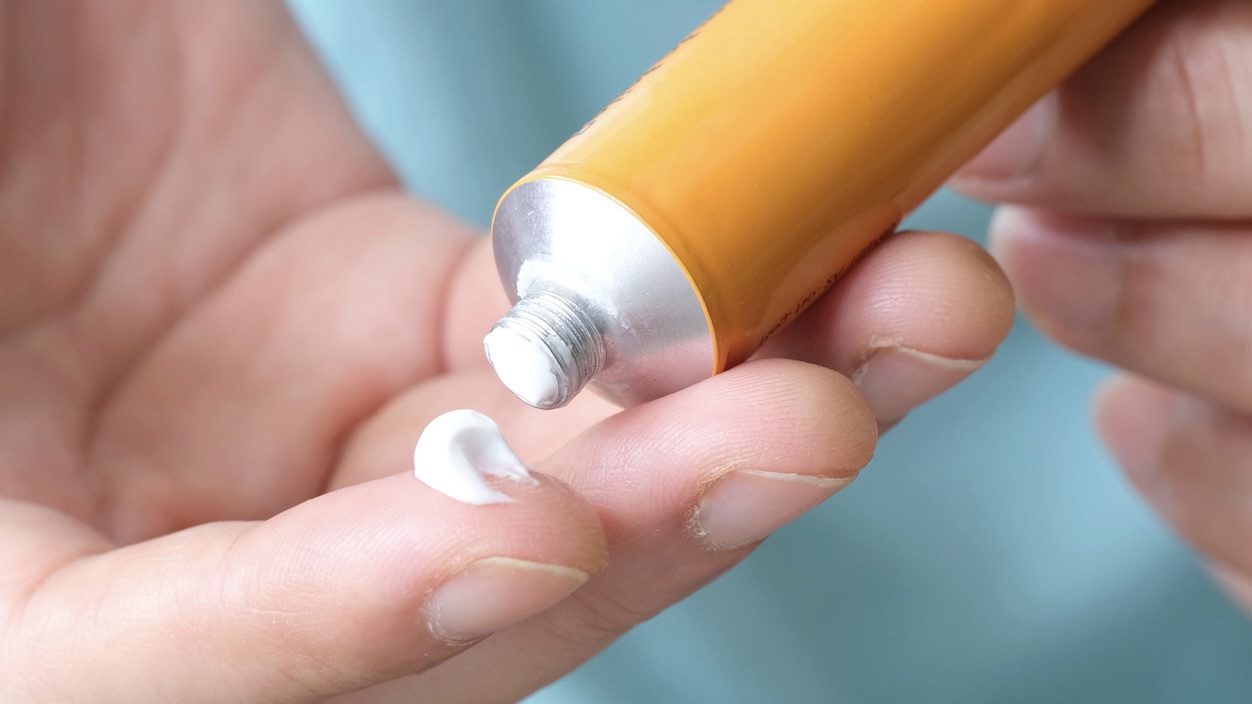This widespread misuse, doctors warn, is fuelled by dangerous combination creams, unqualified practitioners and the lure of instant cosmetic results.
Published Nov 18, 2025 | 7:00 AM ⚊ Updated Nov 18, 2025 | 7:00 AM

Dermatologists say a typical consultation increasingly begins with patients placing an entire bag of creams on the table.
Synopsis: Dermatologists across India are reporting an alarming rise in “steroid-modified face”, a severe skin condition caused by the prolonged, unsupervised use of potent topical steroid creams that are widely sold without prescription. Experts speaking at the Dakshin Health Summit 2025 in Hyderabad said the misuse is causing stubborn pigmentation, resistant infections and difficult withdrawal reactions. They warned that the trend has become a public health threat and called for urgent action.
Across the country, dermatologists are reporting a surge in patients, from teenagers to working professionals, arriving with what experts now call steroid-modified face, a severe skin condition caused by prolonged misuse of topical steroid creams.
What began as a fringe misuse has grown into a full-blown crisis, say doctors, who are overwhelmed by cases involving thinning skin, extreme sensitivity, acne-like eruptions and stubborn pigmentation.
Dr Sudha Rani, Professor and HoD at GMC Hyderabad and President Elect of IADVL Telangana, speaking at a recent panel discussion on “Steroid abuse in dermatology” as part of the Dakshin Health Summit 2025 in Hyderabad, captured the scale of the problem bluntly:
“The first thing when a patient comes is steroid usage. One is modified tinea (ringworm rash), and the second is the steroid-modified face. These are the two problems every dermatologist is facing. Somehow in the last five to eight years, it has become like an epidemic,” she said.
Dermatologists say a typical consultation increasingly begins with patients placing an entire bag of creams on the table. Most are bought without a prescription and many contain potent steroids mixed with antifungals and antibiotics.
Originally meant for short-term treatment of specific inflammatory skin issues, these creams are now being misused as fairness creams, quick-fix solutions for rashes, overnight glow treatments and even daily-use moisturisers.
This widespread misuse, doctors warn, is fuelled by dangerous combination creams, unqualified practitioners and the lure of instant cosmetic results.
“Everybody wants to give quick relief. So they prescribe these combination treatments. That could be the reason for the rise of steroid-modified face and difficult-to-treat resistant fungal infections,” Dr Sudha Rani explained.
Dr P Usha, senior dermatologist at the Samanvi Institute of Dermatological Sciences, Hyderabad, has issued a strong warning about the escalating complications caused by the misuse of topical steroid creams.
“Steroid-induced acne is extremely common,” she said, noting that patients often present with sudden, severe outbreaks triggered directly by prolonged use.
The danger, Dr Usha cautions, does not end when patients stop using these creams.
“The moment we ask them to withdraw the steroid, there is a flare-up. Steroid withdrawal syndrome, the ‘red face’, is very real,” she said. In rare cases, this withdrawal can produce systemic symptoms.
Dr Usha recalled a patient who developed glaucoma linked to inappropriate topical steroid use. She added that chronic misuse can also lead to cataracts, Cushingoid features and even adrenocortical suppression.
She pointed out extreme cases where patients used 20 to 30 tubes of potent steroids like Betnovate over long periods. “It’s prolonged use and potency, not short-term use, that causes these dangerous side effects,” she stressed.
Meanwhile, Dr Sudip Parajuli, Associate Professor, Department of Dermatology and Venereology at Tribhuvan University in Kathmandu, Nepal emphasised that the problem is no longer limited to specific regions.
“It’s spread beyond borders. We have to tackle it together,” he said, thanking the organisers for spotlighting what is becoming a global dermatological challenge.
When asked about the permanent side effects of long-term, unsupervised steroid use, he was unequivocal: “All the panelists will agree the biggest permanent side effect is atrophy.”
Skin atrophy, he explained, results in thinning of the skin, loss of elasticity and, in many cases, striae, broad and deep stretch marks that are very difficult to treat.
Unlike pregnancy-related stretch marks, these steroid-induced striae are wider, more prominent and often irreversible even after discontinuing the cream.
Dermatologists warn that these marks can occur on the face, arms, abdomen or any area where potent steroid creams are applied repeatedly.
“Prolonged use of topical steroids without supervision,” Dr Prajuli stressed, “is what leads to these permanent and distressing outcomes.”
Dermatologists at the summit explained that, far from the fairness glow they promise, these creams often leave the face with:
Once the skin barrier is damaged, even standard treatments become ineffective, leaving dermatologists struggling to reverse the harm.
One of the most alarming trends, doctors say, is how long patients continue using these creams without supervision. By the time they seek help, the face is so altered that recovery can take months and sometimes longer.
“Some patients use it for two years, six years on the face, and come in a very bad stage,” said Dr Sudha Rani.
Experts say this epidemic did not arise in isolation but from failures at multiple levels of the system. Manufacturers have flooded the market with irrational combination creams, while chemists routinely sell potent steroid creams without a prescription.
At the same time, unqualified practitioners continue to prescribe these products for almost every minor rash, and many patients keep reusing old prescriptions for months or even years. Together, these factors have created a perfect storm that fuels the widespread misuse of topical steroids and the surge in steroid-modified face.
“We need to start from patient education to the manufacturer. Easy availability and access is the main cause,” Dr Sudha Rani said.
With steroid-modified face now showing up in every dermatology OPD, experts say India can no longer afford to brush aside steroid abuse as a minor cosmetic issue. It has grown into a public health threat.
Experts called for immediate steps including:
(Edited by Dese Gowda)
